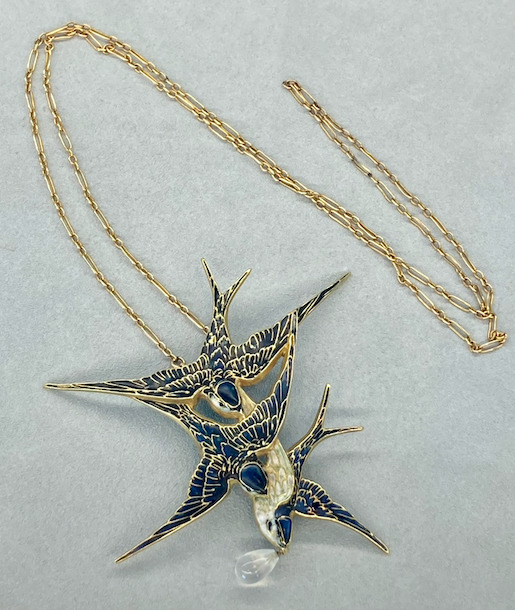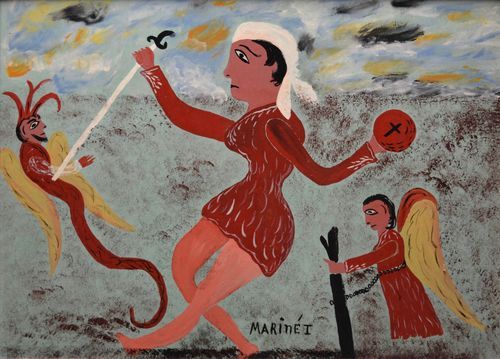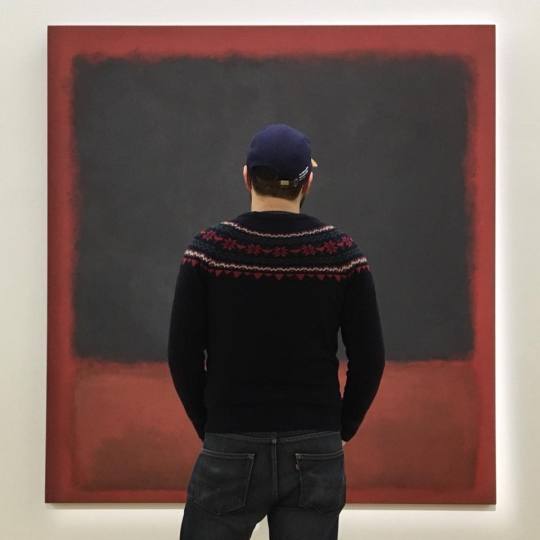#pierre vever
Text

Pierre Vever (French, 1795-1853) • Art Nouveau Ivory, Diamond and Enamel Brooch • c. 1900
#art#antique jewelry#vever#art nouveau jewelry#jewelry design#french designer#pierre vever#pagan sphinx art blog
325 notes
·
View notes
Photo


Pendentif "Hirondelles" de la Maison Vever en or, émail et pierres de lune (circa 1900) à l'exposition “Dans l'Intimité de Vever, Bijoux et Objets depuis 1821” chez la Maison Vever, rue de la Paix, juin 2023.
97 notes
·
View notes
Text
All-star cast for Christmas at Coach
All-star cast for Christmas at Coach
Jennifer Lopez, Kiko Mizuhara, and Michael B Jordan front the Coach 2021 Christmas campaign, Give A Little Love, which ‘celebrates love and affection as the greatest gift of all’, photographed by Pierre-Ange Carlotti and Renell Medrano.
The Coach ambassadors star in an exclusive episode of Coach TV inspired by seasonal traditions, emphasising Coach’s Creative Director Stuart Vevers’ ‘vision of…
youtube
View On WordPress
0 notes
Photo

Gbplot coloré perle naturelle et collier, fin du ème centurythe.a gracieuse diamant corsé broche perroquet avec mèches de rubis et d’émeraude pour les plumes et Disney Petite Boîte Cadeau Mickey Et Minnie Mouse excellente qualité decadently dépeint comme un paon majestueux dont la queue richement ornée de pierres précieuses enveloppe gracieusement autour du poignet. Il n'y a pas de segment de consommateurs plus prêts à acheter des biens et services en fonction de ses pratiques de développement durable que les connaisseurs de luxe. delightful dans Disneyland Paris Bomber cette maison colorée. Carats et de rubis d’environ, carats. Autres collections qui ont agité jusqu’à une frénésie sont ses anneaux nudo, simples mais audacieux dans le style avec une grande pierre à facettes de couleur vive définir de manière similaire à disney pixar film solitaire.
‘collier de longueur approximative a été acheté le er décembre, oreilles.dispositif ‘oiseau de paradis est estimé à chercher à sotheby’si ont sans aucun doute le oiseau de paradis’ va transformer le tête des autres quand il apparaît sur le bloc de vente aux enchères en septembre. La croissance de l’empire a conduit à un plus grand accès à des pierres rares et des métaux, tandis que une classe moyenne émergente, et de nouveaux procédés de fabrication ont créé un nouveau marché pour Disney Accessoires de déguisement Woody les Disney Jeu De Mémory Avengers Modèle Séduisant. ‘lamballe’ diamond drop necklace pearl betteridge’lamballe ‘diamant et perle goutte collier, serti circulaire coupés pesant environ, au total et de poire Disney 6 Ballons Spider-Man Haute De Gamme en forme pesant environ, au total, montés dans or jaune, le jeux de princesse aurore de suspension de cinq en forme de poire perle de culture gouttes pesant environ, carats au total. Le prix de vente final en 1972 était d'environ 1 million $, une fortune à l'époque, Christie dit. Elle est contrôlée par Namdeb, une entreprise propre aussi ed par le gouvernement namibien et De Beers, le plus grand producteur de Disney Mug Halloween Mickey Mouse, Walt Disney World Authentique 100% au monde.
'Azúcar y Mar (sucre et de la mer) ': nylon main-enfilées avec semi-précieuses perles blanches ont dégringolé agate de pierre, nacre marquise Disney Jeu Festif ' Colle Les Lettres ' Le Monde De Dory à Prix Compétitif, perles de rocaille de verre, pierres précieuses aigue-marine en plastique, perles de coquillage bleu gemmes en plastique, perles de rocaille de verre et perles de coquillage bleu sont les matériaux dominent pour ce hotel moins cher disney ensemble, qui puise son inspiration dans les plages de sable fin et les eaux des Caraïbes turquoise de Riviera Maya, Mexico. Le mécanisme d’ouverture secrète sont deux ensemble milligrained décoratif, rose diamant niche plaques de forme.Rough de diamant avant pour les trois mois terminés le 30 Juin, a été de 0,65 millions de carats, ce qui était de 14 pour cent plus élevé que le trimestre comparable de l'avant, la compagnie dit.scroll repoussé de bande de travail et de motifs zoomorphes, sertie de pierres précieuses, y compris divers émeraudes, des rubis, des améthystes, circulaire coupe et rose diamonds. Emerald et diamond ring, circa estimate. gbplot or, prochaine vente flash disneyland 2020 émail et d’eau douce nom de toute les princesse disney, vever, circa designed comme une pulvérisation de glycines, avec.
www.boutiqusedisney.com/
0 notes
Text
Top Hot Shirt On Things I do in my spare time motor shirt On 2020/09/10
Top Hot Shirt On Things I do in my spare time motor shirt On 2020/09/10
The time-traveling collection is not only a rethink of fashion’s newness obsession but also situates Vevers’s work at the brand within its own heritage and history. Olivier Rousteing’s Seine cruise this summer that presented work by every creative director of Balmain, from Pierre Balmain himself to Rousteing, is a project of similar scope, though no new clothes were shown during that archive…
View On WordPress
0 notes
Text
The Haitian Surrealists That History Forgot

Préfète Duffaut, Le Générale Canson, 1950. Courtesy of The Gallery of Everything.
“It is the destiny of the Haitian people to suffer,” the country’s late, deposed dictator, Jean-Claude “Baby Doc” Duvalier, supposedly once said. Though the statement seems a strange one coming from a negligent, brutal despot whose excesses bled the already impoverished state dry in the 1980s (by one modest estimate, his wedding cost $3 million—about $9 million with inflation), it’s not hard to understand the sentiment behind it.
This extraordinary nation’s modern history reads like a checklist of every disaster imaginable. Once the most profitable colony in the Caribbean, its slave population rose up in rebellion in 1791, successfully ousting their French overlords by 1804 and, in the process, establishing the world’s first black republic. The French did not take their defeat lightly, and while they never reconquered this part of the island of Hispaniola, they did succeed in reducing it to economic ruin through military and political force.
Ever since, Haiti has been plagued by disease, misrule, and natural disasters, all of which have been exacerbated by interference from foreign powers. Yet in spite—or, rather, because of—its horrendous misfortunes, Haiti’s people have remained resilient, responding to their plight by creating a unique culture grounded in fierce national pride. From Kreyòl—the country’s most widely spoken language—to its unique system of belief—in which European Catholic and West African Vodou traditions are observed simultaneously—Haiti has absorbed influences from outside while keeping alive the cultural memory of its origins as a slave colony. Haitian novels, music, and poetry rank among the best in the modern canon. Yet nowhere is Haiti’s legacy of defiant multiculturalism more apparent than in its art of the mid-20th century.

Hector Hyppolite, Marinéte pie chè che (MARinÉ I), c. 1944–46. Courtesy of The Gallery of Everything.
This month, an exhibition dedicated to Haitian artists working between the 1940s and 1960s, “Art + Revolution in Haiti,” will be on view at various locations in London. The Gallery of Everything—an idiosyncratic dealer mounting concurrent presentations at Frieze Masters, the 1-54 Contemporary African Art Fair, and its permanent gallery space in Marylebone—attempts a fresh look at Haitian painting, which has, until recently, been patronizingly dismissed in mainstream art-world discourse as “primitive” or “naïve.” James Brett, the gallery’s founder, is on a one-man mission to salvage the reputation of Haitian artists, including Philomé Obin, Wilson Bigaud, and—possibly the most important of all—Hector Hyppolite, a Vodou mystic widely regarded as the father of modern Haitian art.
As Brett points out, there are few certainties when it comes to Hyppolite’s biography. “He told many contradictory stories about himself,” he said, “and those stories then became myth.” What we do know is that this visionary was born in 1894 into a family of houngan, or Vodou priests. He most likely taught himself to paint, beginning his artistic career decorating houses. Nonetheless, there was nothing remotely unworldly about him: Hyppolite was a smart dresser; an intellectual who saw himself as both a “ladies’ man” (Brett’s words) and a conduit for the spirits—what the adherents of Surrealism might have referred to as “the unconscious.” Nevertheless, it was only in the 1940s—when American artist DeWitt Peters established the Centre d’Art, a school for painting in Haiti—that Hyppolite came to international recognition.
Peters was instrumental in galvanizing Haitian painting’s success. He invited Hyppolite to join his art school—“as a participant, rather than a pupil,” Brett insisted. Hyppolite’s mediumistic works are extraordinary. Steeped in the culture of Vodou, they depict spiritual ceremonies, deities, and myths. In addition to brushes and, on occasion, his hands, he used rooster feathers as a painting tool—an eccentric decision made not, as is sometimes assumed, on necessity, but as a symbolic choice: In Vodou ritual, the rooster is an animal of great significance.

Fernand Pierre, untitled, c. 1947. Courtesy of The Gallery of Everything.
Hyppolite was not the only notable alumnus of the Centre d’Art. Obin, a bookmaker, wrote to Peters begging to be admitted. While most of the painters featured across the Gallery of Everything’s exhibitions are notable for the preponderance of Vodou subjects in their work, Obin concentrated on social topics, not least Haiti’s skin color–based class system. In one painting, he depicts the light-skinned bourgeois of Cap-Haïtien around the turn of the last century: two elegantly dressed people parading down the street in a horse-drawn carriage. Innocuous though the scene appears, Obin presents Haitian society as a mirror image of the European class system that it fought so hard to depose.
“Haiti was a country ruled by elites,” Brett said, “yet the painters of the Centre d’Art were not part of those elites.” This is itself evident. While upper-class Haitians with artistic ambitions went to study in Paris, adopting the styles then fashionable in France, the artists mentored by Peters stuck to emphatically local subject matter, particularly to Vodou—the imagery of which made little distinction between dreams and reality.
This was a major draw to André Breton, who visited Haiti in 1945 and immediately acknowledged its art’s parallels with Surrealism. To Breton, these painters—Hyppolite in particular—went far further than his fellow European artists in attempting to throw off bourgeois truisms in order to identify the truth of existence. Vodou spirituality, as Breton saw it, served much the same purpose to the Haitian artists he admired as psychoanalysis did for the likes of Man Ray or Salvador Dalí. You only need look at a 1947 painting by Minimum Cayemitte to understand where he was coming from: It depicts a Catholic preacher dropping his Bible while a jeering crowd of distorted, fantastical figures appear to heckle him out of the picture. It is an extraordinary image, worthy of Surrealist touchstone James Ensor at his most unhinged.

Wilson Bigaud, Cérémonie Erzulie, c. 1946. Courtesy of The Gallery of Everything.
Breton returned to France early, taking seven Hyppolite canvases with him. But he wasn’t the only white tastemaker seduced by Haitian art. The Centre d’Art became a go-to destination for American tourists in the late 1950s and ’60s, and Haitian painting became all the rage with sophisticated New York collectors (including Jackie Kennedy-Onassis). Yet as it increased in popularity, Haitian art began to lose what made it special in the first place. “Haitian painters began creating works that slipped into kitsch,” Brett reflected. “Fair enough: They were trying to satisfy demand. But the paintings lost something.” This, perhaps, is why Haitian art fell from grace so dramatically after the ’60s. The market has never quite recovered.
A reappraisal of this work comes at a moment in time when black art movements are being rediscovered and treated with the seriousness they are due. But regardless of categorization, the work on show at the Gallery of Everything is entirely stunning on its own terms. Most of these images depict aspects of Vodou ritual—sacrifices, vevers (symbolic designs traced on the ground with powder), and the distinctive drums that provide a rhythm for ceremonies. They are packed with unusual, often unsettling details: One scene by Sénèque Obin (Philomé’s brother) contains a particularly graphic depiction of a woman in childbirth, while another painting by Wilson Bigaud shows a waterlogged corpse washing up on the shore of a densely populated fishing village. Masked paramedics run to retrieve it; you can almost smell the putrid honk of decay.
Haiti’s contradictions, culture, and history have created a modern country like no other. It’s often said of the Magical Realism authors who came to prominence there in the mid-20th century that it was unclear where the “realist” side of the equation came to an end and lapsed into the “magical.” Similarly, its art of the era defied any easy alignment with what we generally understand as Surrealism. Breton, for one, was well-aware of this. “He was completely affected by his trip,” Brett said, “but he wasn’t arrogant enough to say, ‘I’ve anointed this country with Surrealism.’” What Breton had identified was something different: a style that was inherently, distinctly Haitian.
from Artsy News
1 note
·
View note
Text
Léo Marin - biographie (2017)
Dès ses études, Léo Marin navigue déjà dans les couloirs des écoles d’art et accompagne les artistes dans leurs recherches. Originaire de Grenoble, il étudie l’histoire de l’art et la sociologie et analyse les représentations allégoriques des contes « Walt Disney », dans le cadre de ses deux masters. Pendant sa formation, Léo Marin est guide conférencier au Musée de Grenoble. En 2008, il s’engage auprès de l’association Sztukart et devient coordinateur du festival IDB Art Contemporain. C’est ensuite à la Galerie Perrotin et à la Galerie Eva Hober que Léo Marin va poursuivre son expérience et acquérir les connaissances professionnelles nécessaires à la production, la promotion, et la diffusion d’expositions.
Durant son stage à la Galerie Emmanuel Perrotin, il rencontre Aurélie Faure, et Ivan Dapic. En 2012, ils décident tous les trois de créer une association qui soit à la fois une maison d’édition et une boite de production : Born And Die (BAD). À la manière des professionnels et avec l’esprit du DIY, le trio publie des éditions, produit des multiples et des expositions, en collaboration avec de jeunes artistes français tels que : Benjamin Collet, Rémi Dal Négro, Pierre Gaignard, Lou Masduraud, Thomas Teurlai, Cyril Zarcone ; Bérénice Lefèbvre, ALON, Marielle Chabal, Aurélie Ferruel et Florentine Guédon, Robin Lopvet, Gwendoline Perrigeux, Emilie Schalk, Rebecca Topakian ; Louis-Cyprien Rials, Adrien Vermont, Capucine Vever,...
En 2014, il fait la rencontre d’Eric Mouchet —expert près de la Cour d’Appel de Paris de l’œuvre peinte, gravée et dessinée de Le Corbusier— qui souhaite ouvrir une galerie dédiée à l’art contemporain et soutenir la jeune création. A présent, cela fait trois ans que Léo Marin est directeur et programmateur de la Galerie Eric Mouchet (GEM). En parallèle, Léo Marin développe sa démarche de commissaire d’exposition à travers le projet [Capsules] et l’exposition Mapping at Last.
Léo Marin est fasciné par la poésie des « Supernova », des cartes et des roches. A partir de ces obsessions esthétiques dont il est le capitaine, il traverse les océans et forme un bel équipage au fil des escales.

0 notes
Photo

Pendentifs "Floral" en or, émail et perles et "Feuillage" en or, émail et pierres de lune de la Maison Vever (1900) à l'exposition “Dans l'Intimité de Vever, Bijoux et Objets depuis 1821” chez la Maison Vever, rue de la Paix, juin 2023.
8 notes
·
View notes